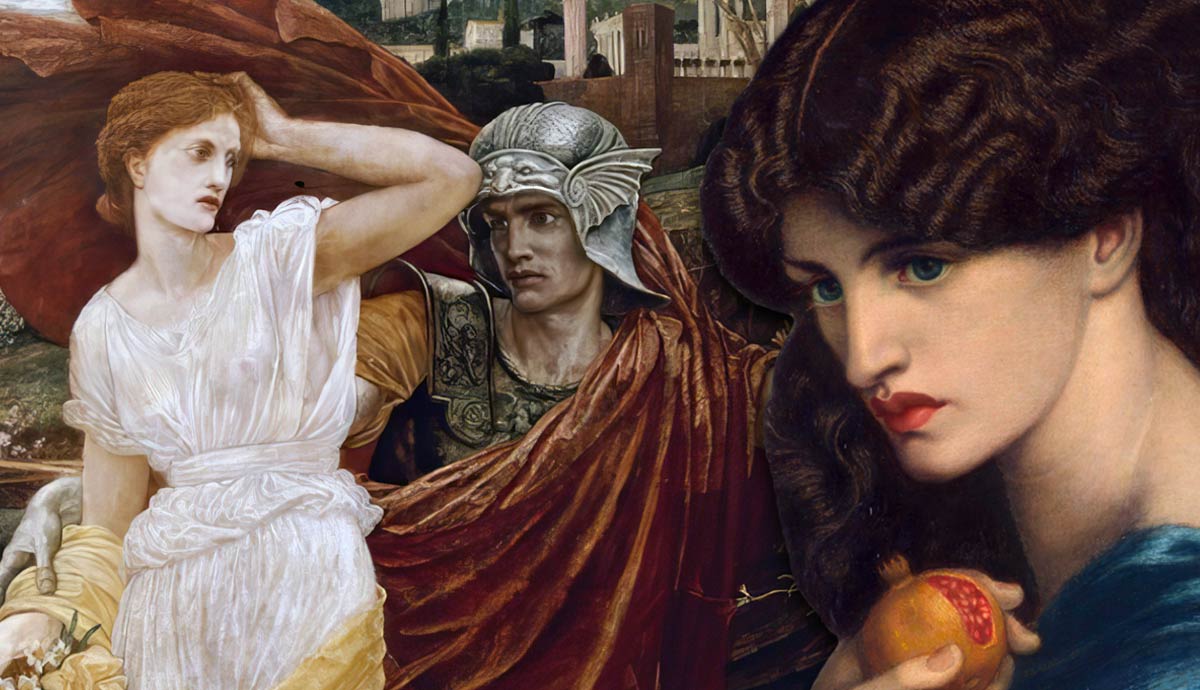
Ancient Egypt was the world’s longest-continuing civilization, flourishing for over three millennia before becoming part of the Roman Empire. The Pharaoh was more than just an absolute leader; he, or sometimes she, was the incarnation of the divine on earth. The prosperity of the Egyptian people depended on the prosperity of the Pharaoh, and he was destined to join the gods in the Duat after death. While every Pharaoh was important as a link in a mighty chain, some were more powerful than others and left a greater mark on the history of ancient Egypt. Meet the 15 most important Pharaohs that you should know about.
15. Narmer, 1st Dynasty (3150-3100 BCE)

According to tradition, Narmer united Upper and Lower Egypt into a single great civilization around 3150-3100 BCE, giving birth to the Pharaonic model of leadership. Much of his fame can be attributed to the Narmer Palette stone tablet, one of the earliest Ancient Egyptian artifacts ever found and the first depiction of an Egyptian King. The palette connects Narmer with the god Horus, suggesting that he was the manifestation of the god on earth.
14. Djoser, 3rd Dynasty (2630-2611BCE)

The 3rd dynasty Pharaoh Djoser built Egypt’s first pyramid as a grand mausoleum that would transport him into the afterlife alongside the god. The Step Pyramid was an evolution of earlier mastaba tombs and reflects evolving beliefs around the Pharaoh and the afterlife. It was also the first great stone monument built by the Egyptians, who would become famous for their monumental architecture. This endeavor was made possible by the development of mining activity, trade, and farming practices.
13. Sneferu, 4th Dynasty (2613-2589 BCE)

Sneferu was the founder of the 4th dynasty, ruling for 50 years before being succeeded by his son Khufu. Sneferu built Egypt’s great wealth through trade and war with Nubia (now Sudan) in the south, allowing him to build famous landmarks, such as the Bent Pyramid and Red Pyramid, the first true pyramids.
12. Khufu, 4th Dynasty (2589-2566 BCE)

Khufu was responsible for building the Great Pyramid at Giza, the only one of the Seven Wonders of the World still standing. Much like his son Khafre, Khufu was depicted by Herodotus as a tyrant. However, modern archeologists question the validity of those claims due to the stability and economic standing of Egypt during his reign.
11. Khafre, 4th Dynasty (2558-2532 BCE)

Khafre was the son of Khufu and builder of the middle Pyramid in the Great Pyramid Necropolis at Giza. He’s also believed to be responsible for the Great Sphinx flanking the causeway to his monument. Khafre led Egypt during a time of great economic strength, and despite being demonized by later Greek historians, he was Pharaoh during one of Egypt’s most prosperous periods.
10. Senusret I, 12th Dynasty (1971-1926 BCE)
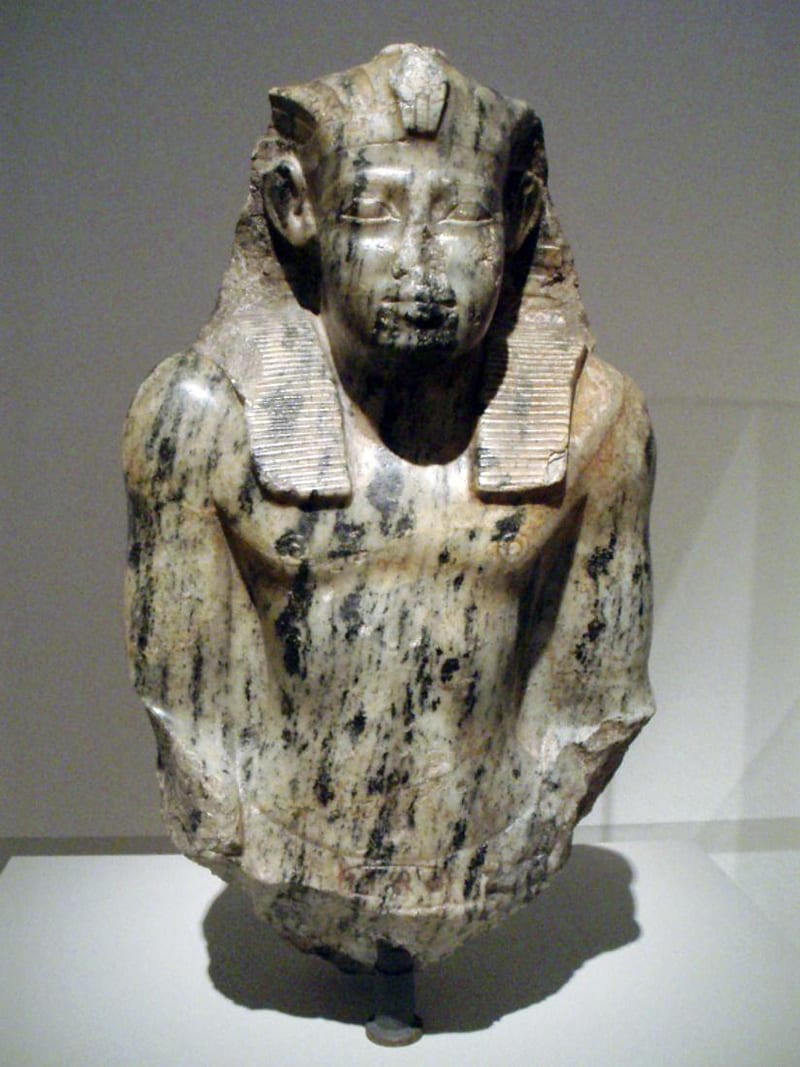
The 12th dynasty Pharaoh Senusret I ruled for 45 years during the Middle Kingdom. He was an expansionist king campaigning predominantly in Nubia, establishing a new southern border. Domestically, he championed improved irrigation and farming along the Nile, particularly within Fayum. While not as prolific as his peers, he built monuments such as the Heliopolis Obelisk and helped usher in new trends in art and hieroglyphics.
9. Ahmose I, 18th Dynasty (1549–1524 BCE)

King Ahmose I took the throne as a child when Egypt was overrun by the Hyksos and was in economic ruin due to mine closures and restricted trade. After being helped in regency by his formidable mother, Queen Ahhotep I, Ahmose established a firm rule and was consequently able to drive the Hyksos out and stabilize the economy. He was another pyramid builder, constructing the last known pyramid at Abydos. It was originally nearly 50 meters tall (162 ft) but has been reduced to rubble because it was built from mudbrick rather than stone.
8. Hatshepsut, 18th Dynasty (1479–1458 BCE)
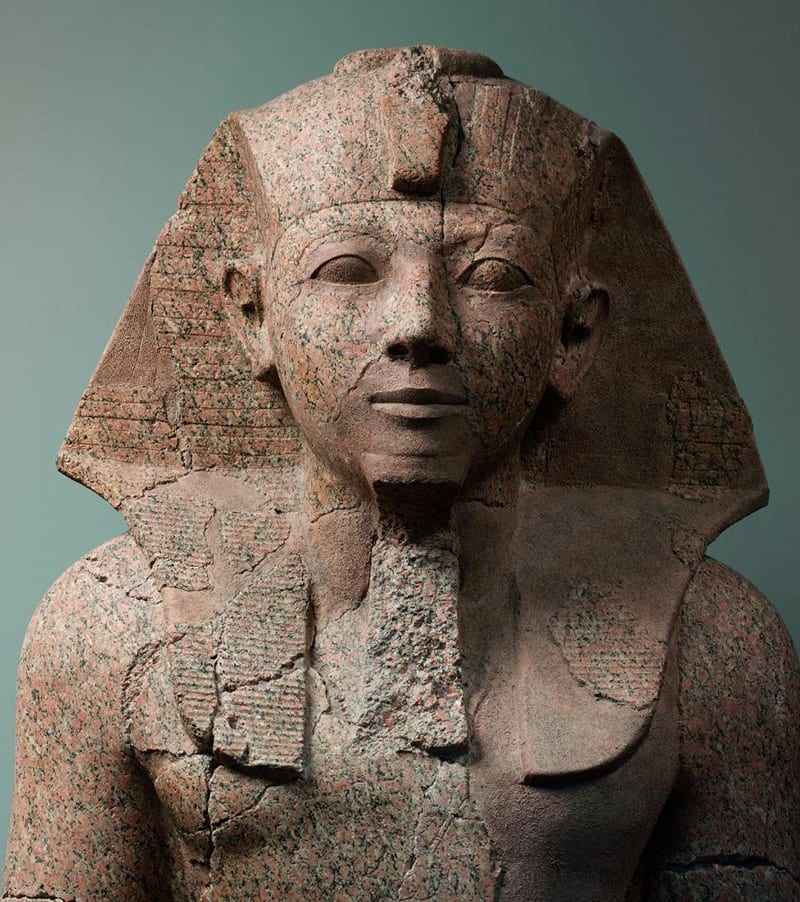
Hatshepsut began her reign as regent to her nephew Thutmose III, who was only two when his father died. She took power for herself, and after 20 years, named herself Pharaoh. Female Pharaohs were rare, but she was not the first. Styling herself like her male counterparts, down to being depicted with the Pharaonic beard, Hatshepsut rebuilt trade routes that had been destroyed during the Hyksos invasion and re-established relationships with neighboring states, including obtaining great riches from the Land of Punt to build Egypt’s economy into a formidable position. She commissioned a fantastic array of buildings and monuments, including the famous Mortuary Temple of Hatshepsut below the cliffs of Deir el-Bahari.
7. Thutmose III, 18th Dynasty (1458–1425 BCE)

Thutmose III finally took the throne after the death of his aunt Queen Hatshepsut, who accidentally poisoned herself while trying to treat a skin condition. He conducted numerous lengthy military campaigns, including the conquest of Syria, and grew Egypt into an unmatched regional superpower. His expansion saw the Egyptian coffers filled with plunder obtained through war, trade, compulsory grain acquisition, and taxation. Thutmose III built many great monuments, two of which are obelisks now residing in London and New York, and rebuilt the Great Hypostyle Hall at Karnak Temple. Toward the end of his reign, Thutmose III defaced temples and buildings related to Hatshepsut to strengthen the claim of his heir, Amenhotep II, and keep Hatshepsut’s progeny from attempting a revolt.
6. Amenhotep IV/Akhenaten, 18th Dynasty (1351-1334 BCE)

Pharaoh Amenhotep IV inherited a powerful Egypt from his father, Amenhotep III, who was renowned for his international diplomacy, sound domestic stewardship, and prolific building, including the world’s largest funerary complex at Thebes. But a few years into his reign, Amenhotep IV abandoned the sound precedent of his father. He abandoned the polytheistic religious traditions of the Egyptians and established a new, potentially monotheistic, religion based on the Aten, the sun disk. This involved changing his name to Akhenaten, meaning the “servant of Aten,” and establishing a new capital at Amarna. It is unclear whether he was motivated by religious zealotism or if it was a political move to take power away from the powerful priests of Amun in Thebes and focus more power on himself. His reign was also a revolutionary period in Egyptian art.
5. Tutankhamun, 18th Dynasty (1332-1323 BCE)

Tutankhamun was not a powerful Pharaoh, but he is famous for the discovery of his tomb. While Tutankhamun has a relatively modest tomb, unlike many others found in the Valley of the Kings, it was not picked bare by grave robbers. The riches discovered there when Howard Carter opened the tomb provide just a taste of the kind of wealth that must have been buried with Egypt’s great Pharaohs. He was a son and successor of Akhenaten, coming to power at around the age of ten following some mysterious interim successors. Guided by advisors, he led the return to Thebes and traditional Egyptian religion.
4. Horemheb, 18th Dynasty (1319-1292 BCE)
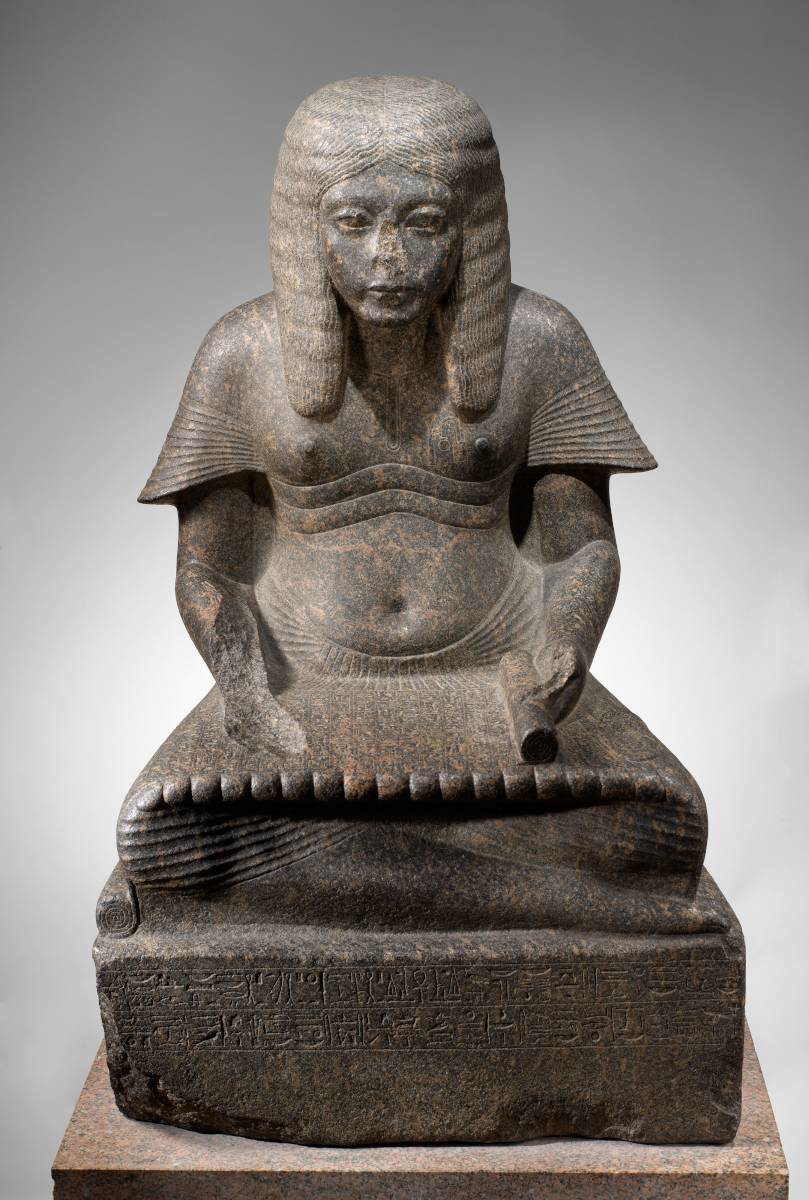
Horemheb remains a low-profile Pharaoh but had a significant impact. Horemheb was a commoner who built his reputation in the military under Akhenaten as a gifted scribe, administrator, and diplomat. He continued this role under Tutankhamun and Ay, an advisor who took power after the boy-king died. Horemheb brought stability and prosperity back to Ancient Egypt, stamped out graft and corruption, and laid the platform for sustained growth under the famous 19th Dynasty Pharaohs such as Ramesses II.
3. Ramesses II, 19th Dynasty (1279-1213 BCE)

Ramesses II is also known as Ramesses the Great, highlighting his importance. Despite a fondness for propaganda and self-aggrandizement, he was Pharaoh for 66 years during arguably Egypt’s most prosperous and stable period. Ramesses II spent the early part of his reign subduing enemies such as the Hittites, Syrians, and Nubians. The Battle of Kadesh was the start of his fame and a rallying point amongst the populace. Ramesses II was also responsible for monumental building projects such as Abu Simbel, his capital Pi-Ramesses, and his mortuary temple, the Ramesseum, at Luxor.
2. Ptolemy I Soter, Ptolemaic Kingdom (305-282 BCE)

Foreigners had taken power in Egypt before and styled themselves after the native Pharaohs, but few were as successful as Ptolemy. The famous Macedonian king Alexander the Great conquered Egypt in 332 BCE, and when he died a decade later, his generals fought over the spoils. Ptolemy I Soter, a childhood friend of Alexander, successfully claimed Egypt for himself in the decades of conflict that followed, styling himself as Pharaoh and establishing the Ptolemaic Dynasty, which would rule for 250 years. He also brought significant Hellenistic influence to Egypt, including the Greek language, significantly changing the culture while respecting the past. This is embodied in the new capital, Alexandria, founded by Alexander and built by Ptolemy and his successors, most of whom were also called Ptolemy
1. Cleopatra VII, Ptolemaic Kingdom (51-31BCE)
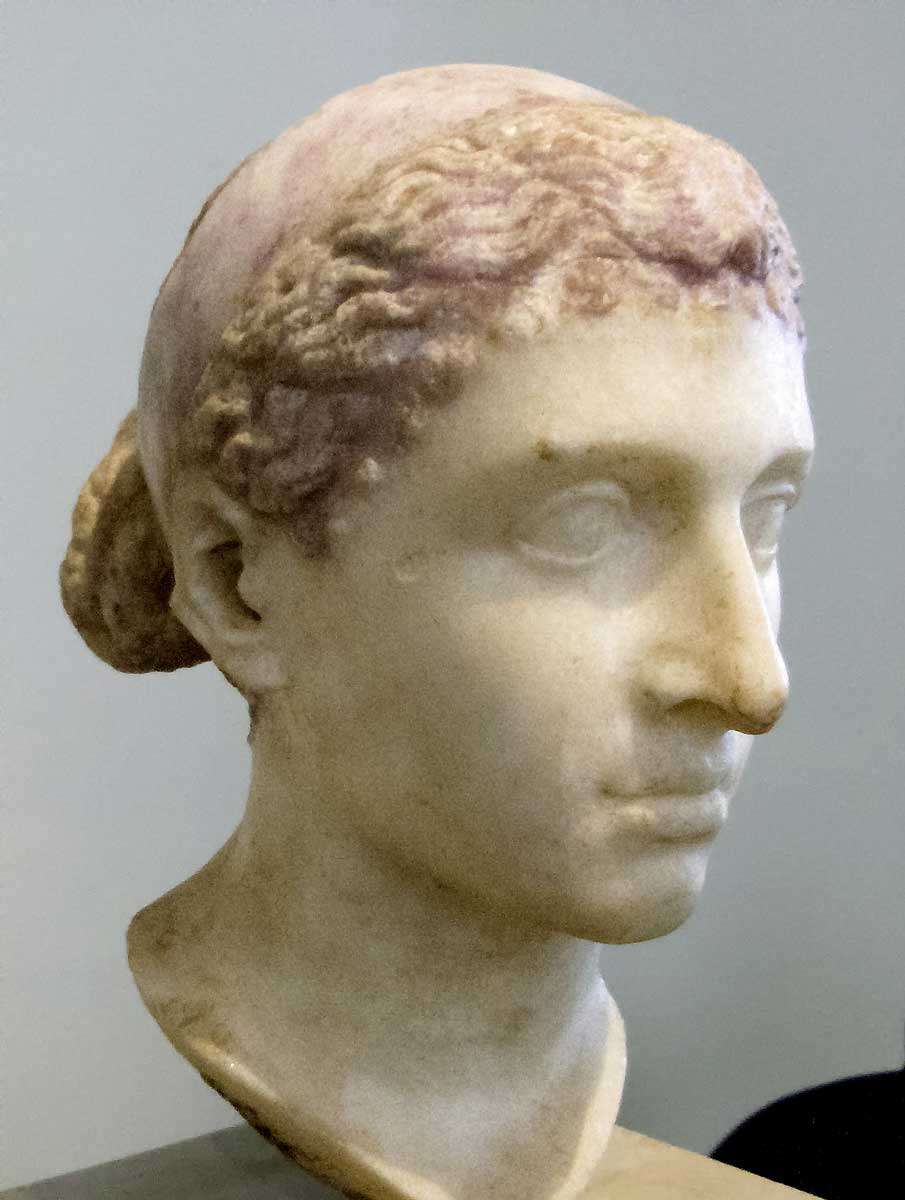
Cleopatra VII was Egypt’s last Pharaoh in the period preceding Rome’s annexation. One of Egypt’s most famous figures, her ability as a leader and politician has been diminished by her family’s incestuous hierarchy and her salacious love affairs with Caesar and Mark Antony. Cleopatra took an Egyptian throne that was in debt and under threat. Through political maneuvering and sheer ruthlessness, she was able to stave off the demise of Egypt until Octavian eventually made her succumb. Cleopatra’s a real-life Shakespearean tragedy, allegedly committing suicide by snakebite after the death of lover Mark Antony in 31 BCE, opening the path for Roman domination.






